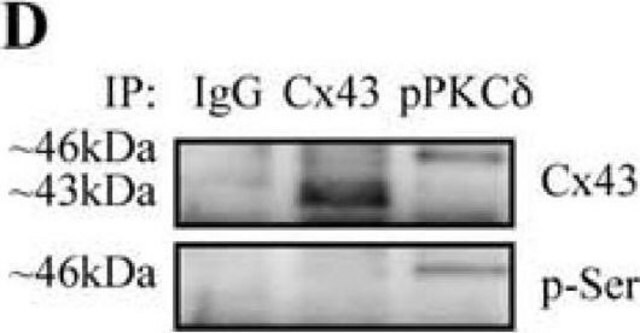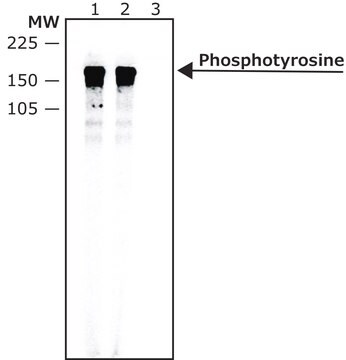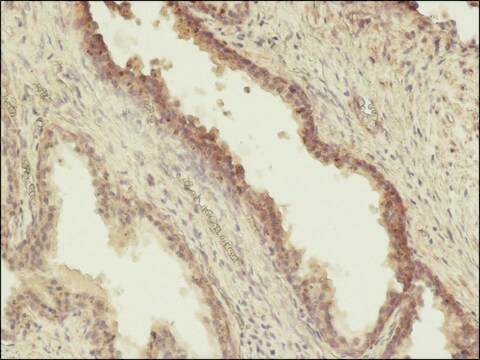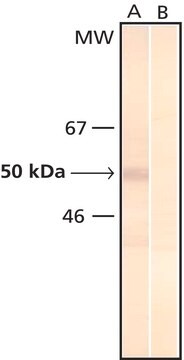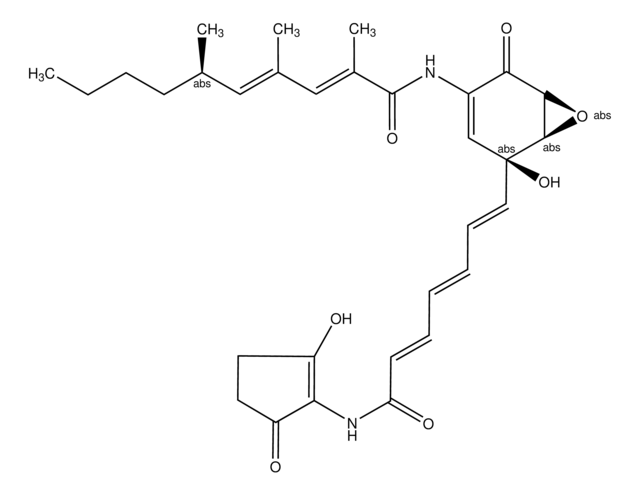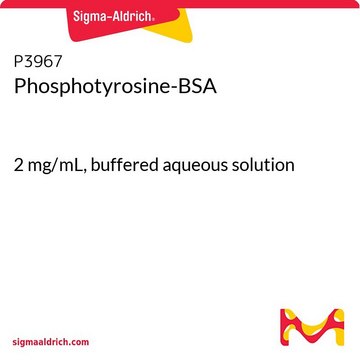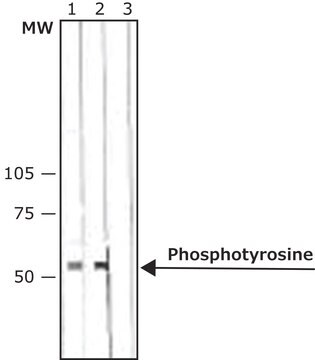P6623
Anti-Phosphothreonine antibody, Mouse monoclonal
clone PTR-8, purified from hybridoma cell culture
Sinónimos:
Monoclonal Anti-Phosphothreonine, Phospho Thr, Phospho Threonine, Phospho-Thr, Phospho-Threonine, p-Thr
About This Item
Productos recomendados
biological source
mouse
Quality Level
conjugate
unconjugated
antibody form
purified immunoglobulin
antibody product type
primary antibodies
clone
PTR-8, monoclonal
form
buffered aqueous solution
concentration
~2.5 mg/mL
technique(s)
dot blot: suitable
immunocytochemistry: suitable
immunoprecipitation (IP): suitable
indirect ELISA: 0.5-1 μg/mL
microarray: suitable
western blot: 5-10 μg/mL using A431 cell extracts
isotype
IgG2b
shipped in
dry ice
storage temp.
−20°C
target post-translational modification
unmodified
¿Está buscando productos similares? Visita Guía de comparación de productos
Categorías relacionadas
General description
Specificity
Immunogen
Application
Biochem/physiol Actions
Physical form
Storage and Stability
Disclaimer
¿No encuentra el producto adecuado?
Pruebe nuestro Herramienta de selección de productos.
Storage Class
10 - Combustible liquids
wgk_germany
WGK 3
flash_point_f
Not applicable
flash_point_c
Not applicable
Elija entre una de las versiones más recientes:
Certificados de análisis (COA)
¿No ve la versión correcta?
Si necesita una versión concreta, puede buscar un certificado específico por el número de lote.
¿Ya tiene este producto?
Encuentre la documentación para los productos que ha comprado recientemente en la Biblioteca de documentos.
Nuestro equipo de científicos tiene experiencia en todas las áreas de investigación: Ciencias de la vida, Ciencia de los materiales, Síntesis química, Cromatografía, Analítica y muchas otras.
Póngase en contacto con el Servicio técnico